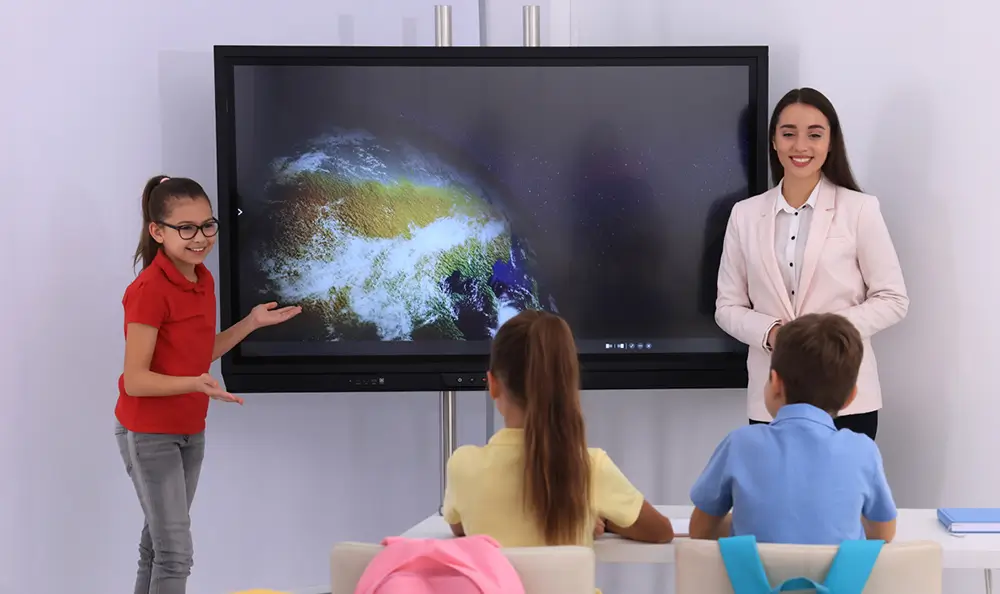Drop the lecture
In today's world of constant connectivity and instant gratification just a click away, students today have shorter attention spans than ever before. That means that the days of professors standing in front of the classroom and lecturing, might be over. Not only does lecturing not engage students or encourage their participation, it may actually be hurting their education.
The practice of lecturing dates back over 900 years to when universities first emerged in Western Europe. It is often the default or predominate way of getting information across in higher education institutions and often the only method employed by instructors. While this way of teaching is becoming increasingly less effective, the question remains — how else can higher education instructors engage their students?
While theories and trends of the best way to learn often differ and change over time, one ever-popular method of teaching is proving to be most effective among students today — active learning.
Take responsibility for education
Active learning, as defined by Study Guides and Strategies, is experiential, mindful and engaging. Through it, instructors can explore a set of more effective and interesting learning experiences, allowing them to take more responsibility for their student’s education vs. the traditional or default methods of teaching.
Research by PNAS looked at 225 studies that reported on examination scores or failure rates of student performance in undergraduate science, technology, engineering and mathematics (STEM) courses under traditional lecturing versus active learning. Results indicate that average examination scores improved by about 6% in active learning sections, and that students in classes with traditional lecturing were 1.5 times more likely to fail than were students in classes with active learning.
You can explore active learning through:
- Active listening: Intentionally focusing on what’s being said in a conversation, lecture or group. The goal is for students to replay or repeat back what they just heard in their head.
- Seeing: The use of images — pictures, graphs, maps, diagrams and more — and matching these images with verbal cues, such as titles and authors, to help retain information.
- Seeing and hearing: Sharing information through engaging formats such as PowerPoint lectures, multimedia and movies. These mediums have the advantage of illustrating readings and sound bites making them inherently more engaging than listening alone.
Flip the classroom
As for the educators' take on “flipping the classroom” — decreasing the lecture and focusing precious class time on group projects and other forms of active learning — a decisive majority of professors seem to be on board, according to a survey of college professors and academic technology administrators. When asked their feelings on the notion of “changing the faculty role to spend less time lecturing and more time coaching students,” 69% said they were excited more than fearful.
From cell phones to laptops to tablets and more, emerging technology plays a huge role in student’s lives today. It’s what they’re used to, comfortable with and is also their preferred method of learning.
Bring in technology
To stay on point with the way students prefer to learn and learn best through the use of technology, higher education institutions must adopt technology into the classroom and move away from solely lecturing or even lecture-based models. One way to incorporate technology is through the use of interactive whiteboards (IWBs).
IWBs are gaining popularity among universities today due to their ability to help instructors display images, text and video on touchscreen display panels at high resolutions, turning the classroom into an interactive space.
Remote students can go from observers to active participants as they are able to connect with the onsite classroom and see the instructor’s presentation or markups in real time. Multiple students can view and participate at once with standard viewing options, and instructors can videoconference and use picture-in-picture to see remote student participants.
IWBs can also help promote group-work and peer-to-peer learning. In a 2015 study involving higher education engineering students, research found that an IWB played a key role in the learning process of students — helping to promote various styles of learning including: exploratory, explanatory, clarifying and insertion. The results also show that the IWB may facilitate a "joint workspace," a social realm featuring student dialogue and interactivity.
Instructors can further promote active learning with an IWB by:
- Using it for more than video and presentation. An IWB is a window to the internet and can be used as such. Engage it for Skype® calls, webinars, online discussion boards and breaking news articles.
- Allowing students to rotate between independent work, an instructor-led activity, and a small-group task done using the IWB.
- Having the students physically use the IWB and reduce the time an instructor spends at the front of the room. Getting students up and out of their chairs is a form of active learning.
Projectors are another way that instructors can add an element of interactivity into their lecture and easily grab student’s attention — further engaging them into the lesson. Whether an instructor is projecting in a small meeting room or to an entire auditorium, we have projectors designed to fit their specific needs.
Projectors in the classroom can be used for:
- Demonstrations
- Slideshows
- Data share outs
You can also pair them with a standard whiteboard for group markups in front of the classroom.
We offer services, solutions and technology built specifically for the needs of higher education institutions. Discover how to further engage your students using technology services.

Source: RICOH USA
